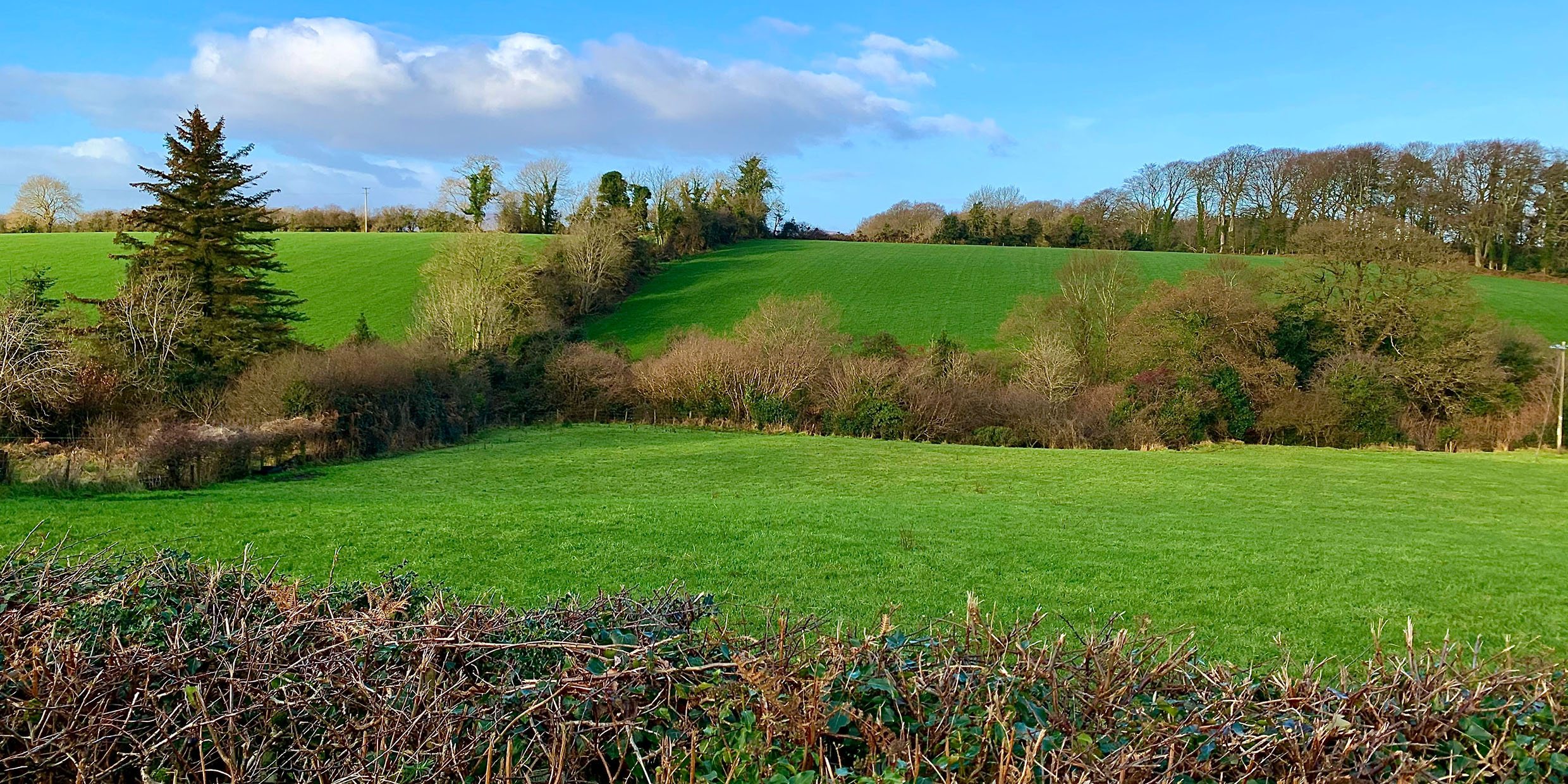Originally published 9 July 1990
Much has been written lately about the rampant destruction of tropical rain forests. Another well-known natural habitat is disappearing at an equally alarming rate: the hedgerows of Europe. Although not as significant as rain forests on the global scale, hedgerows are nearer and dearer to the hearts of many Americans because of our cultural heritage.
Certainly, one of the most charming aspects of the European countryside, especially in Britain and Ireland, is the patchwork of irregular fields bounded by hedgerows. Every hedgerow is a miniature nature preserve, sheltering a rich variety of flora and fauna. Dog rose, honeysuckle, bluebell, violet, lesser celandine, hedgehog, bank vole, shrew, wood mouse, chaffinch, wren. The list is endless and familiar. Flowering hawthorn is the backbone of many hedgerows, and when it blooms in May the countryside explodes in a riot of white blossoms.
The patchwork landscape of rural Britain and Ireland mostly dates from about 300 years ago, when much open land was enclosed by Acts of Parliament. The new field boundaries were often banks of earth heaped up from ditches to either side and planted with trees and thorny shrubs. Hedgerows were cheaper to establish than walls or fences, and had the advantage, if properly tended, of self-renewal. With a number of small hedge-enclosed fields at his disposal, a farmer could rotate crops and animals among the fields, ensuring continued fertility.
As natural habitats for wildlife, hedgerows are unsurpassed. They are ribbons of forest plaited across the land, a web of wilderness through which animals can move with secrecy and safety. In Britain and Ireland, hedgerows account for more acres of wildlife habitat than all nature preserves and national parks. They shelter something like a third of all species of plants and animals.
But hedgerows are gravely threatened.
Destruction in progress
Over the last six months, I have lived in a house in Ireland that looks down upon a very ancient fabric of tiny hedged fields. Even as I have watched, the hedgerows have been appreciably diminished, a pattern of destruction typical of other places in these islands and on much of the European continent.
The pressure on hedgerows comes from the nature of modern farming. Big machinery requires big fields to operate economically. Chemical fertilizers eliminate the need to rotate crops: sustained productivity can be purchased in 110-pound plastic bags. Small unproductive farms are bought out by larger, more efficient operators, who root out hedgerows between fields, drain, and fertilize. The delightful patchwork quilt of pastures, crops, and fallow meadows yields to an unbroken expanse of monotone green.
From the farmer’s point of view, the grubbing of hedgerows, as it’s called, makes perfect sense. Fields can be chemically forced and mechanically harvested two or three times in a single season, without the age-old anxiety about rain-spoiled hay lost on the ground or in the stack.
What is lost are flowery hay meadows, the hum of insects, singing birds, and a host of other wildlife.
Even along the verges of public roads, where little can be gained by grubbing hedges, farmers root them out and replace with barbed wire or electric fences, presumably to obtain a tiny extra margin of land. Country lanes that once were sun-and-shade dappled tunnels of floral delight now might as well be on the plains of Nebraska.
Richard Muir, a noted British conservationist, has (perhaps uncharitably) described the typical hedgegrubber this way: “He usually has a waxed cotton jacket, a flat tweed cap and shares his Range Rover with a dopey Labrador called ‘Dog.’ His hands are soft, his work consists of sessions with his accountant and ordering machine drivers around on a walkie-talkie…He is very rich and very nasty [to nature lovers and ramblers].”
Economic artifacts
The hedgegrubbers, on the other hand, are often quick to write off conservationists as sentimental busybodies who care more for field mice and bluebells than for the well-being of people. Hedgerows, they remind us with some justice, are human artifacts established for economic reasons, and their destruction springs from the same motivation as their creation.
Ultimately, the fate of the hedgerows will be decided politically. Irish farmers presently get government grants to grub out hedges. If the majority of the population wish to retain a visually diverse landscape rich in wildlife, they may have to pay for it. At the very least, they should not pay for its destruction.
As I write, the fuchsia in the hedgerows outside my window is coming into festive bloom. Foxglove, honeysuckle, blackberry, bluebells, and wild rose add to a luxuriant palette of colors and scents. But the music of the birds and insects that live among the flowers is drowned out by the grinding moan of a huge steel-clawed machine that is grubbing hedgerows in fields across the way.
At the present rate of destruction, it will not be long before all of Europe’s hedgerows are gone, the flowering banks and ribbons of wildwood replaced by wire, the only diversity of color that of plastic fertilizer bags piled by the side of the road.



